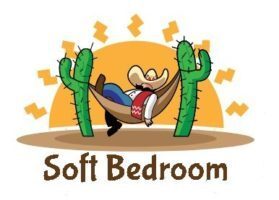Disclosure
This website is a participant in the Amazon Services LLC Associates Program, an affiliate advertising program designed to provide a means for us to earn fees by linking to Amazon.com and affiliated sites.
Did you know that approximately one in three adults suffers from sleep deprivation? While the causes of sleepless nights can be many, one emerging solution is technology. Smart home devices have gained attention for their ability to enhance daily routines, and now, they’re being touted as a potential solution to help improve sleep quality. But can these devices really make a difference when it comes to getting a better night’s rest?
Quick Answer:
Yes, smart home devices can significantly improve sleep by creating an optimal sleep environment. These devices use advanced technology to adjust lighting, temperature, sound, and even track your sleep patterns, making it easier to fall asleep faster and stay asleep longer. From smart thermostats to sleep-tracking gadgets, the right technology can transform your bedroom into a haven for rest.
Our Top Picks for Improving Sleep
Here are the top three smart home devices that can help you sleep better:
Philips Hue White and Color Ambiance Smart Bulbs
These smart bulbs allow you to set the perfect lighting to wind down before bed or simulate a natural sunrise. Their customizable settings help regulate your circadian rhythm, promoting better sleep quality.
Nest Learning Thermostat
With the ability to learn your preferences and adjust your home’s temperature automatically, this thermostat ensures that your bedroom is always at the ideal temperature for sleep.
Fitbit Charge 5
This fitness tracker offers in-depth sleep tracking, including stages of sleep and nightly scores, allowing you to monitor and improve your sleep quality over time.
The Science Behind Smart Devices and Sleep
Conclusion
Smart home devices have proven to be more than just gadgets—they can genuinely enhance sleep quality. From smart lighting that adjusts to your circadian rhythm, to thermostats that create the perfect sleep environment, and sleep trackers that monitor your patterns, these devices can transform your bedtime routine.
FAQs
Can smart home devices help if I have insomnia?
Yes, smart home devices can help create a more conducive environment for sleep, which is especially beneficial for individuals dealing with insomnia. Smart lighting can help regulate your circadian rhythm, and a cool, comfortable room temperature can promote deeper sleep. Additionally, sleep trackers provide valuable data that can help you understand your sleep patterns and make adjustments.
How does a smart thermostat improve sleep?
A smart thermostat, such as the Nest Learning Thermostat, can help improve sleep by maintaining an optimal room temperature. Studies suggest that a cooler environment (around 60-67°F) is ideal for sleep, as it helps your body lower its core temperature and signals that it’s time to rest. Smart thermostats can learn your preferences and adjust the temperature automatically, ensuring your bedroom stays comfortable throughout the night.
Are there any risks associated with using smart devices for sleep?
While smart home devices offer several benefits, there are some potential drawbacks. The most notable risk is the potential for disrupted sleep if your devices malfunction or if they cause distractions. For example, excessive screen time before bed can interfere with sleep quality due to blue light exposure. It’s also important to ensure that devices like sleep trackers do not cause discomfort or disrupt your sleep during the night.
How do sleep trackers improve sleep quality?
Sleep trackers monitor your sleep stages and offer insights into how much deep or REM sleep you’re getting. By understanding your sleep patterns, you can make informed decisions about your bedtime routine, such as adjusting your sleep schedule, reducing caffeine intake, or avoiding disturbances during the night. Some trackers even provide personalized tips based on your data to help you improve your sleep.
What is the best time to use smart lighting for better sleep?
To optimize the benefits of smart lighting, it’s best to start dimming the lights about 30-60 minutes before bedtime. This helps signal to your brain that it’s time to wind down. Additionally, setting a wake-up routine with gradual lighting can help you wake up more naturally, feeling refreshed instead of jolted awake by a harsh alarm.
Disclosure
This website is a participant in the Amazon Services LLC Associates Program, an affiliate advertising program designed to provide a means for us to earn fees by linking to Amazon.com and affiliated sites.
